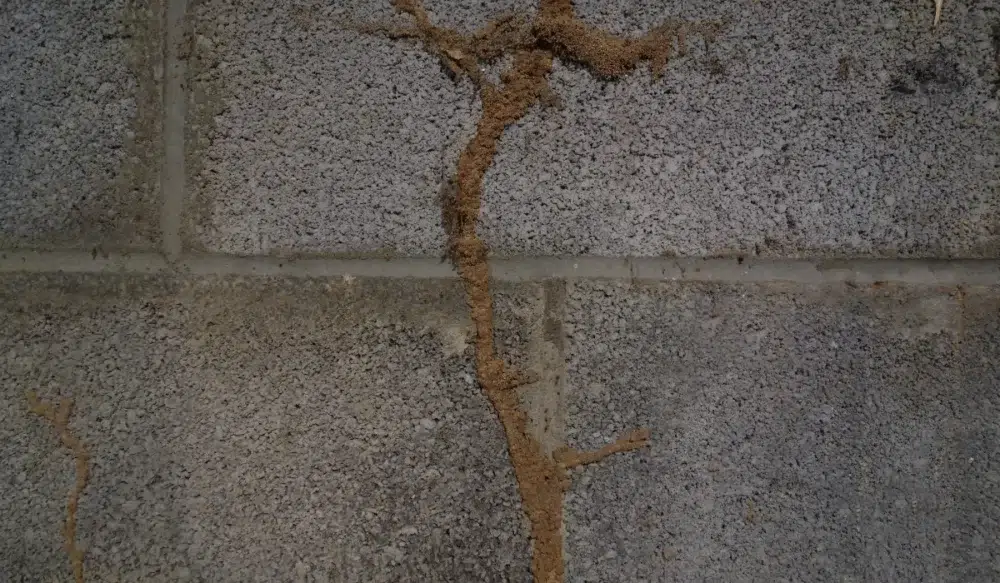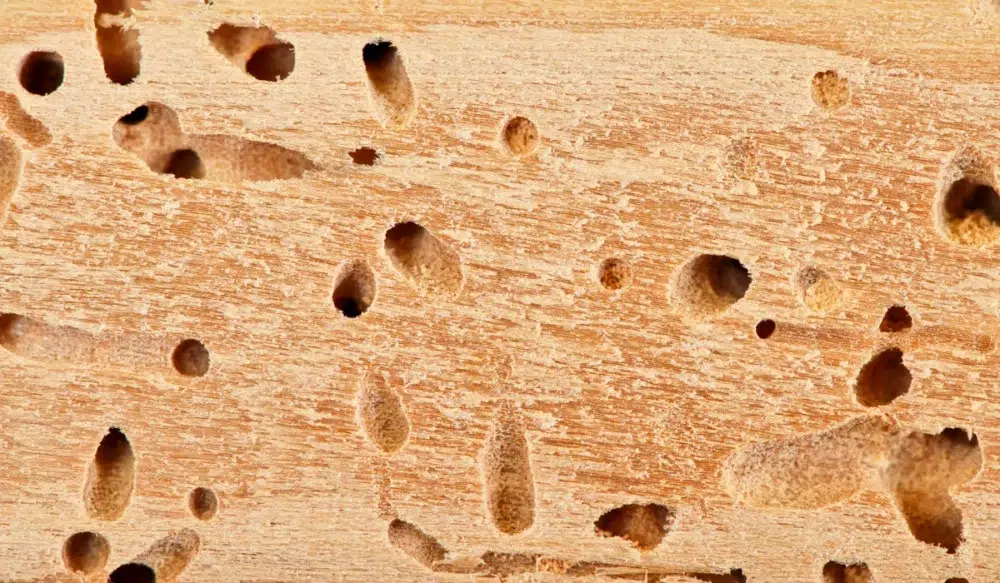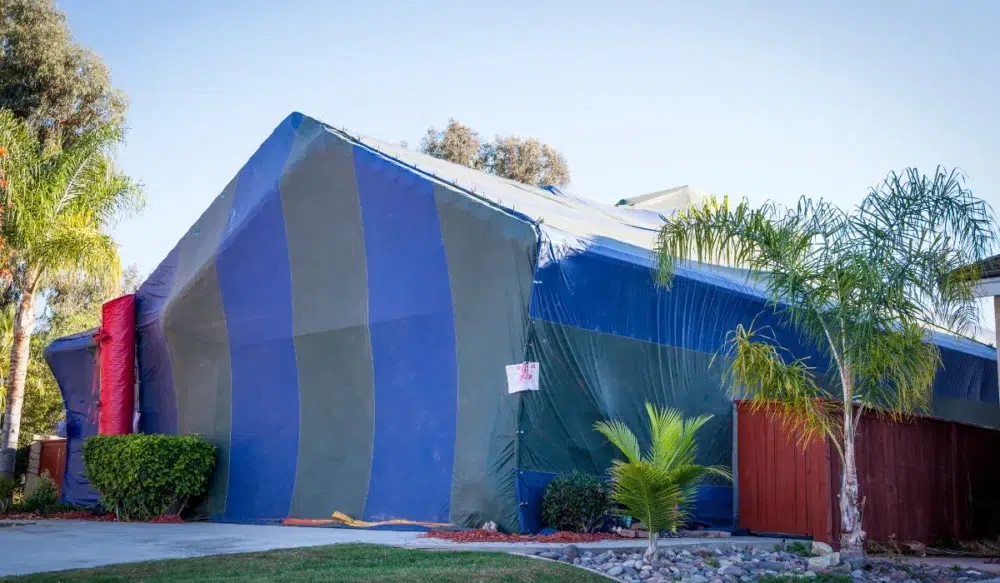When fall brings cooler nights to Phoenix, Tucson, and nearby cities, roof rats in Arizona homes become more active indoors. These rats, also known as black rats or Rattus rattus, leave citrus trees and outdoor cover to seek shelter inside. Homeowners hear scurrying in attics, see gnaw marks on wires, and find rat droppings along baseboards.
Arizona’s warm climate and citrus trees fuel roof rat activity. Rat numbers rise fast when food like fallen fruit, birdseed, and pet food is easy to reach. Once rats find gaps near a roofline or attic vent, infestations can grow quickly.
Roof rats are active year-round, but fall typically marks the peak of their activity. Learn the signs and block entry points to protect homes across Maricopa and Pima counties.
Key Takeaways
- Roof rats in Arizona homes often move indoors in the fall to escape cooler weather.
- Citrus trees, wood piles, and tree branches touching the roof provide easy access.
- Signs of roof rat infestation include droppings, gnaw marks, and scurrying sounds.
- Professional roof rat control from Green Home Pest Control provides safe and effective solutions.
Why Roof Rats Thrive in Arizona
Arizona gives roof rats food, water, and shelter. Fallen citrus, outdoor pet food, and open trash containers provide them with food. Branches, palm fronds, and power lines extend straight to the roofline. Inside, they nest in attics, garages, and walls.
Neighborhoods in Phoenix and Tucson with dense citrus tree populations have reported an increase in roof rat infestations. According to the University of Arizona, rats can travel hundreds of feet along power lines to reach homes. When fruit trees are not pruned and fallen fruit accumulates, the problem only worsens.
Unlike Norway rats or pack rats, roof rats prefer high places. This habit puts attics and roof lines at higher risk in Arizona homes. Understanding why roof rats in Arizona invade homes every fall helps homeowners take the proper steps before cold weather drives them indoors.
Signs Of Roof Rat Infestation
Find roof rats early to avoid costly repairs. Look for these signs:
- Droppings along baseboards or in cabinets
- Gnaw marks on wires, wood, or stucco
- Nighttime scurrying in the attic
You may find droppings near stored food or hear scratching in the walls. Because rats are active at night, problems often grow before you notice.
Another clue is damaged citrus still on the tree or on the ground. Roof rats hollow out fruit and leave the rinds. This, along with droppings, suggests an active infestation.
How Roof Rats Enter Arizona Homes
Roof rats use common entry points. Gaps around attic vents, unsealed roof lines, and cracks in stucco let them in. Overhanging branches and unpruned palm fronds that touch the roof give rats a direct path inside.
Rats also slip in near trash containers, utility lines, and gaps around pipes. These are the same pathways often used by other small rodents, illustrating how roof rats and mice enter Arizona homes through small cracks and poorly sealed openings. Seal holes with steel wool and caulk. Many homes in the Phoenix area require effective rat control to stay protected.
Roof Rat Prevention Tips For Homeowners
Cut food and access to prevent roof rats. Prune fruit trees regularly and remove fallen fruit. Store birdseed and pet food indoors in sealed bins. Keep branches at least six feet from the roof. Move wood piles away from the house.
Maintain clean landscaping by trimming shrubs and removing debris that rats can use for hiding. At Green Home Pest Control, we recommend inspecting attic vents and sealing gaps with metal screens or hardware cloth to prevent pest infestations. Use sanitation, pruning, and exclusion together to keep roof rats away year-round. For example, these steps are crucial if you’re learning how to eliminate roof rats on your Chandler property and want long-term protection.
Roof Rat Control Methods
If prevention is insufficient, consider using roof rat control. Pros place snap traps with peanut butter in attics and garages. Put traps along runways marked by droppings, rub marks, or gnawing.
You can use rodenticides, but always follow the label to protect pets and wildlife. Many Arizona homeowners hire pros trained in safe baiting and exclusion.
The Cooperative Extension emphasizes that trapping, combined with pruning and sanitation, yields the best long-term results. A professional pest management service removes rats and seals entry points to stop re-infestation.
Health Risks Linked To Roof Rats
Roof rats can spread diseases, such as typhus and rat-bite fever. Droppings contaminate storage areas. Chewing on wires raises fire risk. In Maricopa and Tucson, rat populations grow rapidly when food is readily available.
DIY trapping helps, but a professional inspection confirms the team treats the entire problem. At Green Home Pest Control, we use methods that protect children, pets, and local wildlife.
Making The Right Choice For Roof Rat Control In Arizona
Roof rats in Arizona homes don’t just cause noise; they threaten wiring, insulation, and stored belongings. When you start hearing movement or notice new droppings, it’s time to act fast.
Professional rodent control in Arizona, provided by our team at Green Home Pest Control, stops active infestations and prevents future ones from returning with proven, year-round protection.
Contact us today to schedule your roof rat inspection and reclaim a rodent-free home.
FAQs
What attracts roof rats to Arizona homes?
Roof rats seek out food sources like citrus fruit, birdseed, and pet food, and they build nests in attics, wood piles, and roof lines. Overhanging tree branches and power lines make it easy for them to reach homes.
How do I know if I have a roof rat infestation?
Signs of roof rat activity include scurrying noises in the attic, droppings along baseboards, gnaw marks on wires, and hollowed-out citrus fruit left hanging on trees.
What is the best way to get rid of roof rats?
Snap traps baited with peanut butter are highly effective when placed along runways. For complete control, professional pest management services combine trapping, exclusion, and sanitation to eliminate infestations and prevent return visits.




